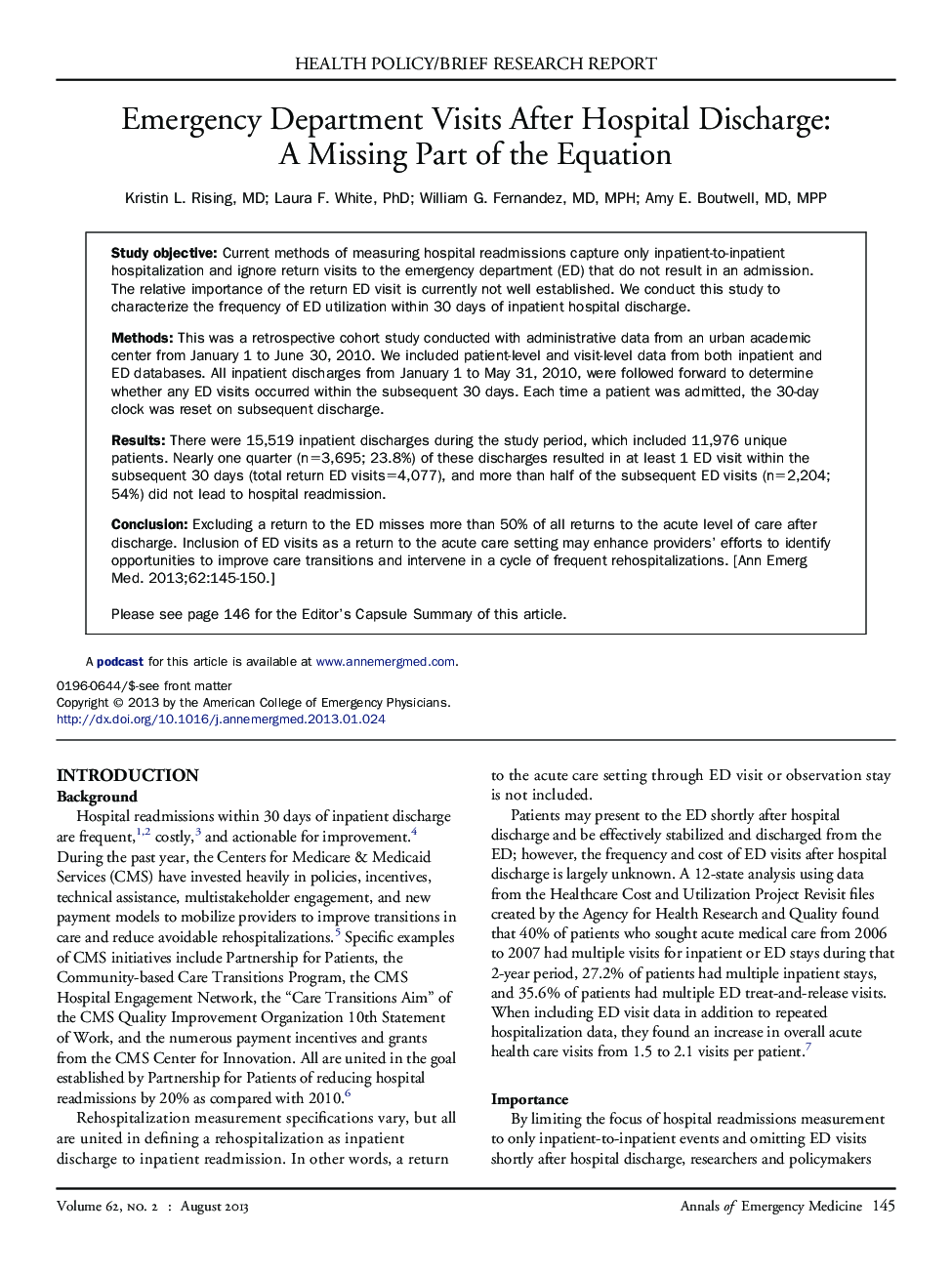| Article ID | Journal | Published Year | Pages | File Type |
|---|---|---|---|---|
| 3229850 | Annals of Emergency Medicine | 2013 | 6 Pages |
Study objectiveCurrent methods of measuring hospital readmissions capture only inpatient-to-inpatient hospitalization and ignore return visits to the emergency department (ED) that do not result in an admission. The relative importance of the return ED visit is currently not well established. We conduct this study to characterize the frequency of ED utilization within 30 days of inpatient hospital discharge.MethodsThis was a retrospective cohort study conducted with administrative data from an urban academic center from January 1 to June 30, 2010. We included patient-level and visit-level data from both inpatient and ED databases. All inpatient discharges from January 1 to May 31, 2010, were followed forward to determine whether any ED visits occurred within the subsequent 30 days. Each time a patient was admitted, the 30-day clock was reset on subsequent discharge.ResultsThere were 15,519 inpatient discharges during the study period, which included 11,976 unique patients. Nearly one quarter (n=3,695; 23.8%) of these discharges resulted in at least 1 ED visit within the subsequent 30 days (total return ED visits=4,077), and more than half of the subsequent ED visits (n=2,204; 54%) did not lead to hospital readmission.ConclusionExcluding a return to the ED misses more than 50% of all returns to the acute level of care after discharge. Inclusion of ED visits as a return to the acute care setting may enhance providers' efforts to identify opportunities to improve care transitions and intervene in a cycle of frequent rehospitalizations.
